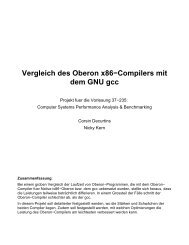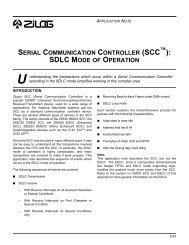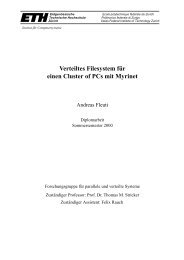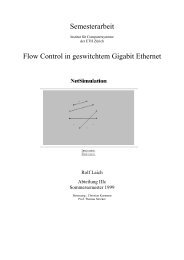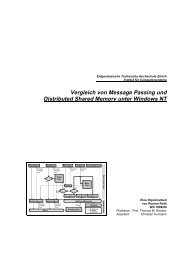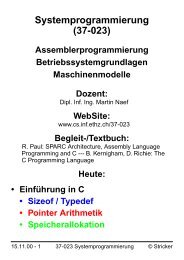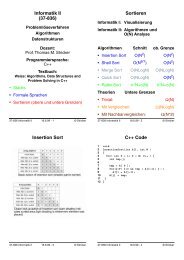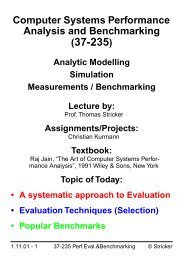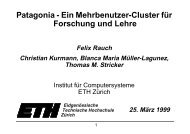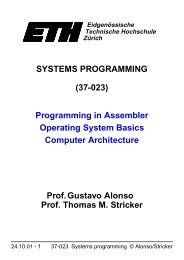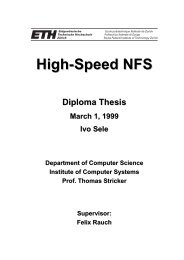Create successful ePaper yourself
Turn your PDF publications into a flip-book with our unique Google optimized e-Paper software.
<strong>SCC</strong>/E<strong>SCC</strong> User’s Manual<br />
Zilog <strong>SCC</strong><br />
MISCELLANEOUS QUESTIONS<br />
Q. Can the <strong>SCC</strong> support MARK and SPACE parity in<br />
async<br />
A. The <strong>SCC</strong> can transmit-end the equivalent of MARK parity<br />
by setting WR4 to select two STOP bits. The receiver<br />
always checks for only one STOP bit; therefore, the<br />
receiver does not verify the MARK parity bit.<br />
The <strong>SCC</strong> (and products using the <strong>SCC</strong> cell) does notsupport<br />
SPAC parity for transmitting or receiving. The<br />
Zilog USC Family of serial datacom controllers do support<br />
odd, even, mark, & space parity types.<br />
Q. Since both D7 and D1 bits in RR0 are not latched,<br />
it is possible that the receiver detected an Abort<br />
condition, set D7 to 1, initiated an external/status<br />
interrupt and before the processor entered the service<br />
routine, termination of the abort was detected,<br />
which reset the Break Abort bit . Currently in<br />
the TM (page 7-20), the description for Bit1: Zero<br />
Count states if the interrupt service routine does<br />
not see any changes in the External/Status conditions,<br />
it should assume that a zero count transition<br />
occurred when in fact, an Abort condition occurred<br />
and was missed. What could be done to<br />
correct this and not miss the fact that an Abort occurred<br />
A. Very few people actually use the Zero Count interrupt.<br />
This interrupt is generated TWICE during each bit time<br />
and is usually used to count a specific number of bits<br />
that are sent or received. If this interrupt is not used by<br />
your customer, then what is said in the TM about the<br />
Zero Count is true for the Abort Condition. If no other<br />
changes occurred in the external/status conditions<br />
and the Zero Count is not used, then the source of the<br />
interrupt was the Abort condition.<br />
Q. Can the <strong>SCC</strong> resynchronize independent clocks<br />
(at the same frequency, but could be out of phase),<br />
one for Rx data and one for Tx data<br />
A. No, the two clocks are independent of each other.<br />
However, the <strong>SCC</strong> provides a special transmitter-toreceiver<br />
synchronization function that may be used to<br />
guarantee that the character boundaries for the received<br />
and transmitted data are the same.<br />
Q. When is EOM and EOF asserted<br />
A. EOM is asserted when it detects depletion of data in<br />
the Tx buffer; EOF is asserted when it detects a closing<br />
flag.<br />
Q. After powering up the <strong>SCC</strong>, are the reset values in<br />
the write and read registers guaranteed<br />
A. No. You must perform a hardware or software reset.<br />
Q. Can you read the status of a write register, such as<br />
the MIE bit in WR9<br />
A. No, in order to retain the status of a write register, you<br />
must keep its status in a separate memory for later<br />
use. However, the only exception is that WR15 is a<br />
mirror image of RR15. Also, the E<strong>SCC</strong> has a new feature<br />
to allow the user to read some of the write registers<br />
(see the E<strong>SCC</strong> Product Specification or Technical<br />
Manual for more details).<br />
Q. Is there a signal to indicate that a closing SDLC<br />
flag is completely shifted out of the TxD pin This<br />
is needed to indicate that the frame is completely<br />
free of the output to allow carrier cut off without<br />
disrupting the CRC or closing flag.<br />
A. No, the only way to find this timing is to count the number<br />
of clocks from Tx Underrun Interrupt to the closing<br />
flag. The E<strong>SCC</strong> contains the feature by deasserting<br />
the /RTS pin after the closing flag. Upgrade to the ES-<br />
CC!<br />
Q. Does the <strong>SCC</strong> detect a loss of the receive clock<br />
signal<br />
A. No, if the clock stops, the <strong>SCC</strong> senses that the bit time<br />
is very long. Use a watch-dog timer to detect a loss in<br />
the receive clock signal.<br />
Q. Is there any harm in grounding the “NO CON-<br />
NECT” (NC) pins in the PLCC package (pin<br />
#17,18,28,36)<br />
A. These NC pins are not physically connected inside the<br />
die. Therefore, it is safe to tie them to ground.<br />
Q. Can the <strong>SCC</strong> be used as a shift register in one of<br />
the synchronous modes with only data sent to the<br />
Tx register with no CRC and no sync characters<br />
A. CRC is optional in Mono-, Bi-, and External Sync<br />
Modes only. The sync characters can be stripped out<br />
via software.<br />
7-10



